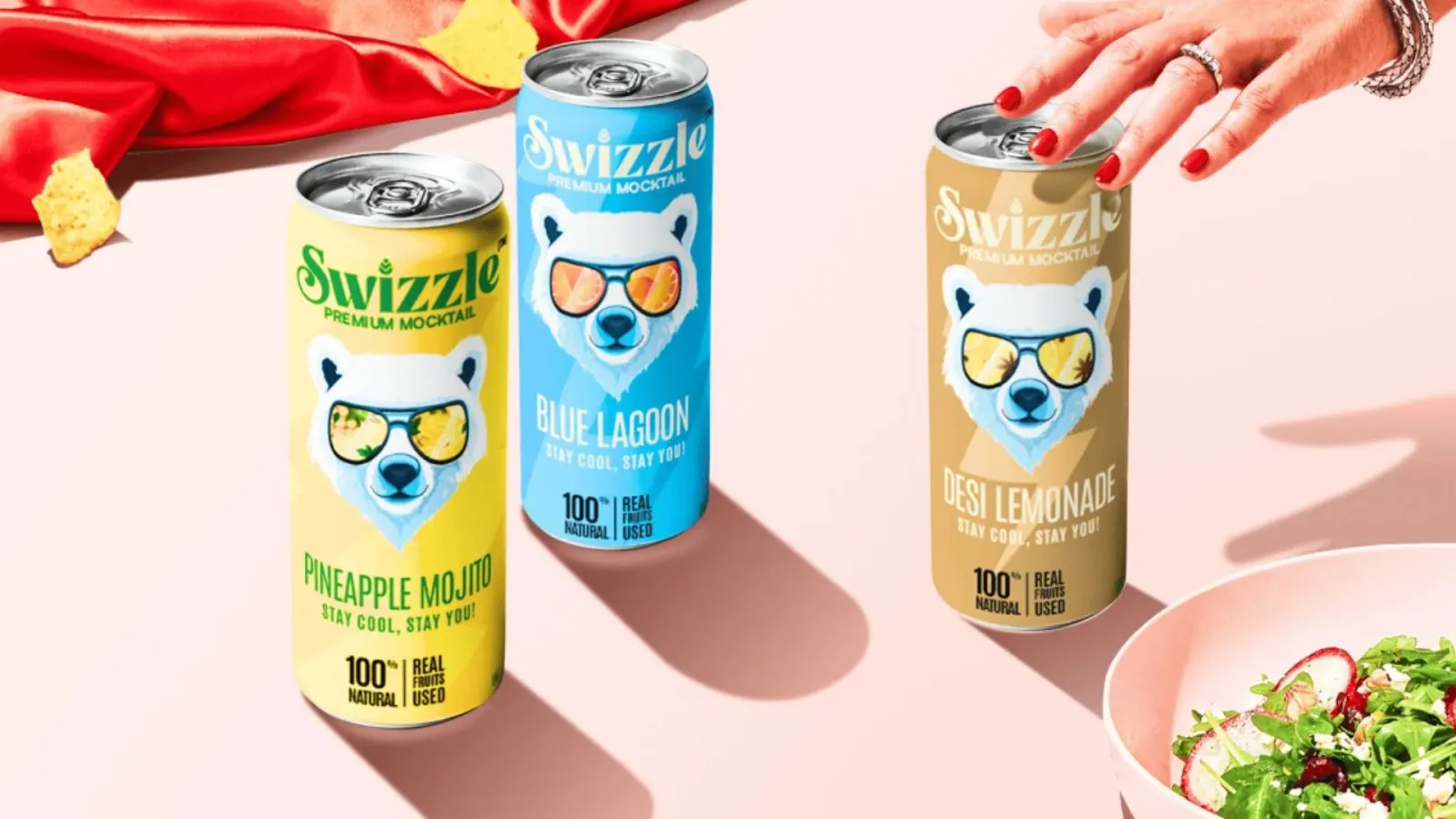.svg)
.svg)
.svg)
.svg)
.svg)
.svg)
.svg)
.svg)
Book a call and get unlimited revisions for your project!
.webp)
.svg)

As a founder, your brand is more than just a business—it's your vision brought to life. But in the hustle of building a company, it's easy for that vision to get fragmented. One team uses an old logo, another goes off-script with messaging, and suddenly, the clear, powerful identity you imagined feels diluted. This isn't just a cosmetic issue; it's a direct hit to your bottom line. Brand consistency is the invisible thread that ties every customer interaction back to your core promise.
It’s what builds the kind of deep-seated trust that turns a first-time buyer into a loyal advocate who feels connected to your mission. For you, the founder, enforcing consistency isn't about micromanaging, it's about protecting your most valuable asset and ensuring the story you set out to tell is heard clearly, no matter where your customers are listening.
Building a strong brand isn't just about having a memorable logo or catchy slogan. Brand consistency forms the foundation that transforms casual customers into loyal advocates. When your messaging, visuals, and experience remain uniform across social media platforms, product packaging, and physical storefronts, you create the reliability that drives both trust and revenue growth.
.webp)
Research shows that brand consistency can boost revenue by up to 23%, with some studies indicating increases as high as 33%. Companies maintaining consistent branding see double the profit gains compared to those constantly changing direction. This isn't just about aesthetics – it's about creating a dependable experience that customers can recognize and trust wherever they encounter your brand.
Brand consistency means presenting your company's identity, values, and messaging uniformly across every customer touchpoint. This includes maintaining the same visual elements like logos, colors, and fonts, while ensuring your brand's personality and voice remain recognizable whether someone sees your Instagram post, opens your product package, or visits your store.
The concept extends beyond visual identity to encompass tone of voice, customer service quality, and the overall experience you deliver. When customers interact with your brand multiple times across different platforms, they should feel like they're dealing with the same reliable company every time.
True consistency creates what marketers call a "unified brand experience" – where every interaction reinforces your brand's core promise and values. This uniformity helps customers form clear expectations about what your brand represents and what they can expect from you.

Consistent brand messaging creates powerful psychological effects that directly impact customer behavior. The "mere exposure effect" explains why repeated encounters with consistent branding make customers more likely to trust and prefer your brand. When people see the same visual elements, hear the same tone of voice, and experience the same quality standards, familiarity breeds confidence.
Why branding consistency matters becomes clear when examining customer purchasing patterns. Studies indicate that 57% of loyal customers spend more on brands they trust, and this trust builds through predictable, reliable interactions. Customers who encounter inconsistent messaging often experience confusion, leading them to seek alternatives.
Companies like Coca-Cola demonstrate this principle perfectly. Their red and white color scheme, distinctive bottle shape, and happiness-focused messaging have remained virtually unchanged for over a century. This consistency allows customers worldwide to instantly recognize the brand and feel confident about their purchase decision.
The financial impact is substantial. Brands maintaining consistency need 75% less media spend to achieve the same results as inconsistent competitors. This efficiency occurs because consistent messaging cuts through market noise more effectively, making your marketing dollars work harder.
Inconsistent branding acts like a slow leak in your business foundation. When customers encounter different logos, conflicting messages, or varying service quality across touchpoints, confusion replaces trust. This confusion has measurable consequences that extend far beyond momentary customer irritation.
The most immediate damage appears in customer retention rates. Research shows that inconsistent brands struggle to build the familiarity essential for customer loyalty. When your social media voice differs dramatically from your packaging tone, or when your storefront experience contradicts your online promises, customers begin questioning your reliability.
Historical examples illustrate these consequences dramatically. When Tropicana redesigned its iconic orange juice packaging in 2009, removing the recognizable orange-with-straw image for a generic design, sales dropped 20% within two months. Similarly, Gap's sudden logo change in 2010 sparked immediate customer outrage, forcing the company to revert to their original design within days.
The "New Coke" disaster of 1985 remains perhaps the most famous example of brand inconsistency damage. By changing their classic formula, Coca-Cola violated customer expectations built over decades. The backlash was so severe that the company quickly restored the original formula as "Coca-Cola Classic."
These failures share common themes: they underestimated customer emotional attachment to familiar brand elements and failed to maintain the consistency that builds trust. When customers can't predict what to expect from your brand, they naturally gravitate toward competitors offering more reliable experiences.
Financial implications compound over time. Inconsistent brands often find themselves in reactive mode, spending extra resources to repair damaged relationships and rebuild lost trust. This contrasts sharply with consistent brands that build equity steadily, allowing them to command premium pricing and enjoy higher customer lifetime value.

Consistent brand messaging examples demonstrate how strategic uniformity drives business success. Nike exemplifies this approach through their "Just Do It" slogan and swoosh logo, which appear consistently across athletic wear, digital advertising, retail stores, and social media. Their messaging consistently centers on empowerment, athleticism, and achievement, creating instant brand recognition globally.
Apple represents another masterclass in consistency. Their minimalist design philosophy, premium positioning, and innovation-focused messaging remain uniform whether customers encounter their products in stores, online, or through advertising. This consistency allows Apple to command premium prices while maintaining fierce customer loyalty.
Starbucks creates consistency through their recognizable green siren logo, cozy store environments, and community-focused messaging. Whether customers visit a location in Seattle or Shanghai, they encounter the same brand experience that emphasizes personalized service and premium coffee culture.
Amazon demonstrates consistency through their customer-centric messaging, distinctive smile logo, and reliable service promise. Their "Earth's most customer-centric company" positioning appears consistently across their marketplace, delivery services, and customer communications.
In contrast, inconsistent brands struggle significantly. RadioShack's attempt to rebrand as "The Shack" in 2013 confused customers without addressing their underlying business problems. The name change felt disconnected from their actual offerings, creating more confusion than clarity.
Yahoo's multiple branding changes and strategic shifts over the years left customers unclear about the company's core purpose. Their inconsistency contributed to losing market position to more focused competitors like Google, which maintained clear, consistent messaging about organizing world information.
McDonald's Arch Deluxe campaign in 1996 failed because it contradicted their established brand identity of affordable, family-friendly dining. Attempting to target upscale audiences confused their core customer base and diluted their market position.
These contrasts highlight how consistency builds brand equity while inconsistency erodes it. Successful brands understand that every customer interaction either reinforces or undermines their market position.
Building brand consistency across social media, packaging, and storefronts requires a systematic framework that guides every brand interaction. This framework ensures your brand speaks with one voice regardless of where customers encounter it.
Visual Identity Alignment forms your framework's foundation. Your logo, color palette, typography, and imagery style must remain consistent across all touchpoints. This means your Instagram posts should use the same colors as your product packaging, which should match your storefront signage. Companies like IKEA demonstrate this perfectly – their blue and yellow color scheme, minimalist aesthetic, and playful tone appear consistently in their stores, catalogs, and social media.
Messaging Consistency ensures your brand personality shines through every communication. Whether writing social media captions, designing packaging text, or training storefront staff, your brand's voice should remain recognizable. Patagonia excels at this by consistently communicating their environmental values across product descriptions, social media posts, and in-store displays.
Experience Standardization guarantees customers receive the same quality and service level across all touchpoints. This includes response times on social media, packaging quality, and in-store service standards. Starbucks maintains this consistency by training staff worldwide to deliver the same personalized service experience.
Platform-Specific Adaptation allows you to maintain consistency while optimizing for each channel's unique characteristics. Your core message remains the same, but delivery methods adapt to platform strengths. For example, your packaging might use QR codes linking to social media content, creating seamless brand experiences across touchpoints.
To implement this framework effectively, start by documenting your brand guidelines comprehensively. Include visual standards, approved language, prohibited terms, and quality expectations. Many successful companies use digital asset management systems to ensure teams access only approved brand materials.
Regular audits help maintain consistency as your business grows. Schedule quarterly reviews of all brand touchpoints, checking for deviations from established standards. This proactive approach prevents small inconsistencies from becoming major brand problems.
Training programs ensure everyone representing your brand understands and implements consistency standards. This includes social media managers, packaging designers, and storefront staff. When everyone understands your brand's core identity, maintaining consistency becomes easier.
Modern businesses need sophisticated tools to maintain brand consistency across multiple channels and touchpoints. Technology solutions can automate consistency checks, centralize brand assets, and streamline approval processes that once required significant manual oversight.
Digital Asset Management (DAM) Systems serve as the backbone for consistent branding. Platforms like Bynder, MediaValet, and Brandfolder provide centralized repositories where approved logos, images, templates, and guidelines live. These systems prevent teams from using outdated or unauthorized brand materials by ensuring everyone accesses the same approved assets.
Brand Compliance Software like Marq, Brandworkz, and Papirfly goes beyond asset storage to actively monitor and enforce brand standards. These tools can automatically flag content that deviates from approved guidelines, preventing inconsistent materials from reaching customers. They often include template systems that maintain visual consistency while allowing customization for different campaigns or regions.
Social Media Management Tools such as Sprout Social help maintain consistent messaging across platforms by providing unified dashboards where teams can plan, review, and approve content before publication. These platforms often include brand guideline integration, ensuring social media posts align with established voice and visual standards.
Collaborative Design Platforms like Canva for Teams include brand kit features that restrict users to approved colors, fonts, and templates. This prevents well-intentioned team members from creating off-brand materials while still enabling creative flexibility within established parameters.
Automated Monitoring Systems can scan your digital presence regularly, identifying inconsistencies before they impact customer experience. Tools like Brand24 track mentions and visual appearances of your brand across the internet, alerting you to potential consistency issues.
For packaging consistency, consider specialized design agencies that understand both brand alignment and production requirements. Professional packaging design ensures your physical products reinforce the same brand identity customers experience online and in stores.
Content Management Systems (CMS) with built-in brand governance features help maintain website consistency. These systems can enforce template usage, approved imagery, and messaging guidelines across all web content.
Analytics and Reporting Tools provide insights into how consistently your brand appears across channels. These platforms can identify which touchpoints perform best and where consistency gaps might be undermining brand recognition.
The key to successful implementation lies in choosing tools that integrate well together. Look for platforms that can share data and maintain consistent brand information across different systems. This integration prevents the tool sprawl that can actually harm consistency by creating isolated brand silos.
Regular tool audits ensure your technology stack continues serving your brand consistency needs as your business evolves. What works for a startup may not scale effectively to enterprise levels, so plan for technology upgrades as part of your brand management strategy.

Understanding the financial impact of brand consistency helps justify investment in proper systems and processes. Multiple metrics demonstrate how consistency directly affects business performance, making it easier to secure resources for brand management initiatives.
Revenue Growth represents the most direct measurement of consistency impact. Companies maintaining consistent branding across platforms report 10-20% revenue increases, with some achieving growth as high as 33%. This growth stems from improved customer recognition, increased trust, and higher conversion rates across all touchpoints.
Customer Acquisition Costs decrease significantly for consistent brands. Research indicates that inconsistent brands need 75% more media spend to achieve the same results as their consistent competitors. This efficiency gain occurs because consistent messaging cuts through market noise more effectively, making advertising dollars more productive.
Brand Recognition Metrics show measurable improvements from consistency efforts. Studies demonstrate that consistent visual identity can increase brand recognition by up to 80%. This enhanced recognition translates directly into customer preference and purchasing decisions, especially in crowded marketplaces.
Customer Lifetime Value (CLV) increases when brands maintain consistency. Loyal customers influenced by consistent branding spend more money over time, with 57% of loyal customers reporting higher spending on trusted brands. This increased spending compounds over years, significantly impacting total revenue.
Market Share Growth often accompanies successful brand consistency initiatives. Brands that present unified experiences across channels typically gain market position against inconsistent competitors. This growth reflects customer preference for reliable, predictable brand experiences.
Premium Pricing Ability develops as consistency builds brand equity. Customers willingly pay more for brands they recognize and trust, allowing consistent companies to maintain higher profit margins. This pricing power becomes especially valuable during competitive market conditions.
To measure these improvements effectively, establish baseline metrics before implementing consistency improvements. Track website conversion rates, social media engagement, customer acquisition costs, and average order values. After implementing consistency measures, monitor these same metrics to quantify improvement.
A/B Testing can isolate the impact of specific consistency improvements. Test consistent versus inconsistent messaging across different customer segments, measuring resulting conversion rates and engagement levels. This data provides concrete evidence of consistency value.
Customer Surveys reveal perception changes resulting from consistency efforts. Regular surveys asking about brand recognition, trust levels, and purchase likelihood help track the softer benefits that eventually translate into financial gains.
Competitive Analysis compares your consistency efforts against industry peers. Brands that achieve superior consistency often outperform competitors in market share, customer satisfaction, and revenue growth.
The compound nature of consistency benefits means ROI often increases over time. Early investments in brand systems and processes pay dividends for years as consistency builds customer loyalty and brand equity. This long-term perspective helps justify upfront costs that might seem significant but deliver substantial returns.
For businesses seeking professional support in maintaining consistency, particularly in packaging design, working with specialized agencies can accelerate ROI by ensuring professional implementation from the start.
Successfully implementing brand consistency requires a structured approach that addresses people, processes, and technology simultaneously. Organizations that try to achieve consistency without proper planning often struggle with adoption and long-term maintenance.
Start with comprehensive brand documentation that serves as your consistency foundation. Create detailed guidelines covering visual identity, messaging standards, tone of voice, and quality expectations. This documentation should include specific examples of correct and incorrect brand usage, making it easy for team members to apply standards consistently.
Establish clear approval processes for all brand-related materials before they reach customers. Designate specific team members responsible for reviewing social media content, packaging designs, and storefront materials. These gatekeepers ensure nothing inconsistent reaches your audience while streamlining the approval workflow.
Implement regular training programs for all team members who represent your brand. Social media managers, customer service representatives, and retail staff all need to understand your brand identity and how to express it appropriately. Training should be ongoing, not just a one-time event, to maintain standards as teams grow and change.
Use technology to enforce consistency automatically wherever possible. Digital asset management systems, brand compliance software, and template-based creation tools prevent many inconsistency problems before they occur. These systems work behind the scenes to maintain standards without slowing down creative processes.
Create cross-functional collaboration between teams responsible for different touchpoints. Your social media team should coordinate with packaging designers and retail staff to ensure consistent messaging across all customer experiences. Regular meetings and shared communication channels facilitate this coordination.
Monitor and measure consistency regularly through systematic audits. Schedule quarterly reviews of all brand touchpoints, looking for deviations from established standards. Use both automated tools and manual reviews to catch problems early and prevent them from impacting customer experience.
Plan for scalability as your business grows. Consistency systems that work for small teams may break down as organizations expand. Build flexibility into your processes and technology choices to accommodate growth without sacrificing brand standards.
If maintaining consistency across all touchpoints feels overwhelming, consider partnering with specialists who understand brand identity development. Professional guidance can help establish proper systems from the beginning, preventing costly consistency problems later.
Implementing a consistent brand strategy, especially for retail companies in competitive sectors like food & beverage, beauty, and wellness, can feel like a monumental task. This is where a specialized partner becomes invaluable.
At Confetti, we focus exclusively on the retail space, acting as a one-stop agency for brands that need to align their identity across every touchpoint. From creating a strong brand identity and designing standout packaging to ensuring your visuals are cohesive with AI photography, we eliminate the complexity and fragmentation that often leads to inconsistency. We understand the pain points of low conversion rates and weak shelf presence, and our integrated approach ensures your brand not only looks consistent but also drives results.
What is branding consistency?
Brand consistency is the practice of presenting your company's identity, messaging, and visual elements uniformly across all customer touchpoints, including social media, packaging, storefronts, and digital platforms. This creates a unified experience that builds recognition and trust.
How do you maintain brand consistency?
Maintain brand consistency by:
Why does inconsistency hurt customer trust?
Inconsistency hurts customer trust because it creates confusion about your brand's identity and reliability. When customers encounter different messaging, visuals, or service quality across touchpoints, they question whether your company is professional and dependable, leading them to choose more consistent competitors.
What are the main benefits of brand consistency?
Which tools help audit brand consistency?
Lorem ipsum dolor sit amet, consectetur adipiscing elit, sed do eiusmod tempor incididunt ut labore et dolore magna aliqua. Ut enim ad minim veniam, quis nostrud exercitation ullamco laboris nisi ut aliquip ex ea commodo consequat. Duis aute irure dolor in reprehenderit in voluptate velit esse cillum dolore eu fugiat nulla pariatur.
Block quote
Ordered list
Unordered list
Bold text
Emphasis
Superscript
Subscript


.svg)